This week's NewsFlash brings us stories of Mosquito love song duets, chemicals that control the spread of cancer and how rocks roll on Mars. Plus, we find out why flashes of certain frequencies can distract the brain, and how humans produce their own aspirin-like chemicals.
In this episode
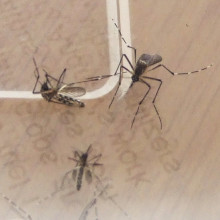
Mosquitoes make sweet music together
We normally think of a mosquito's buzz as being an overture for biting, but in fact it's more like a lover's aria. At least, if you're another mosquito.
Writing in the journal Science, Lauren Cator, from Cornell University in the US, has found that male and female Aedes aegypti mosquitoes harmonise their buzzing just before mating, creating what must be the world's most irritating duet.
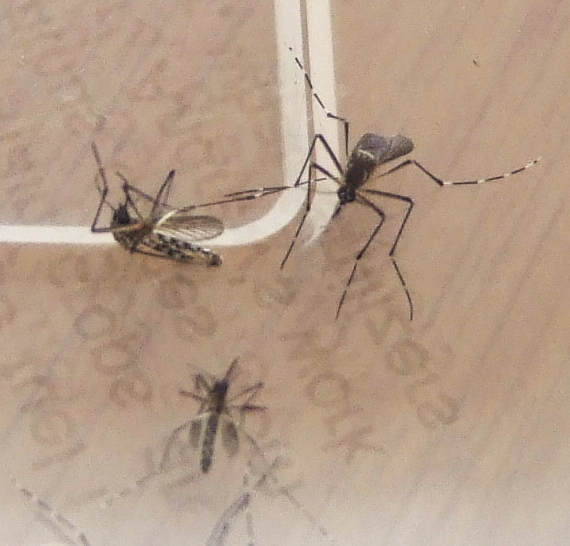 The scientists carried out some very fiddly experiments involving mosquitoes tied to pins, moving one past the other to simulate courtship. Females beat their wings at a frequency of around 400 hertz (roughly a concert A, for any musicians listening), while males beat at a higher-pitched 600 hertz (that's about a fourth higher). But just before they mate, they adjust the resonance of their thoraxes to produce a buzz of 1,200 hertz - a harmonic that's about an octave and a half above the female mosquito's pitch. And they could even get mosquitoes to harmonise with a simulated tone played through an earphone.
The scientists carried out some very fiddly experiments involving mosquitoes tied to pins, moving one past the other to simulate courtship. Females beat their wings at a frequency of around 400 hertz (roughly a concert A, for any musicians listening), while males beat at a higher-pitched 600 hertz (that's about a fourth higher). But just before they mate, they adjust the resonance of their thoraxes to produce a buzz of 1,200 hertz - a harmonic that's about an octave and a half above the female mosquito's pitch. And they could even get mosquitoes to harmonise with a simulated tone played through an earphone.
What's interesting about these findings is that they overturn the conventional wisdom that male mosquitoes can't hear anything above 800 hertz, and that female mosquitoes are completely deaf. They discovered this by taking careful electrical readings from the insects' antennae and Johnston's organs- the mosquito equivalent of our ears.
But there's also something more important at stake. The mosquitoes that Cator and her team studied spread nasty - and even fatal - diseases like yellow fever and dengue fever. Dengue fever affects 50 million people around the world.
The researchers found that female mosquitoes who had just mated were much less likely to harmonise with male tones, suggesting they're not really up for it again.
So the scientists suggest that releasing lots of sterile males into areas plagued by the mosquitoes might lead to female mosquitoes mating with them, which would not result in baby mosquitoes. And then the females would be less likely to go on to mate with fertile males. So it could help to control the population.
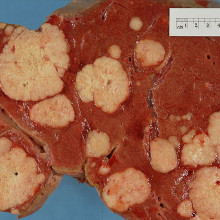
Sowing the Seeds of Cancer
Nine out of ten cancer deaths are due to tumours spreading from the original site, the primary tumour, to form secondary tumours in places like the lungs, liver or brain. Scientists call this metastasis. Now new research from scientists in the US, UK and Canada has revealed an important molecule called LOX is involved in metastasis, which could lead to new treatments for cancer.
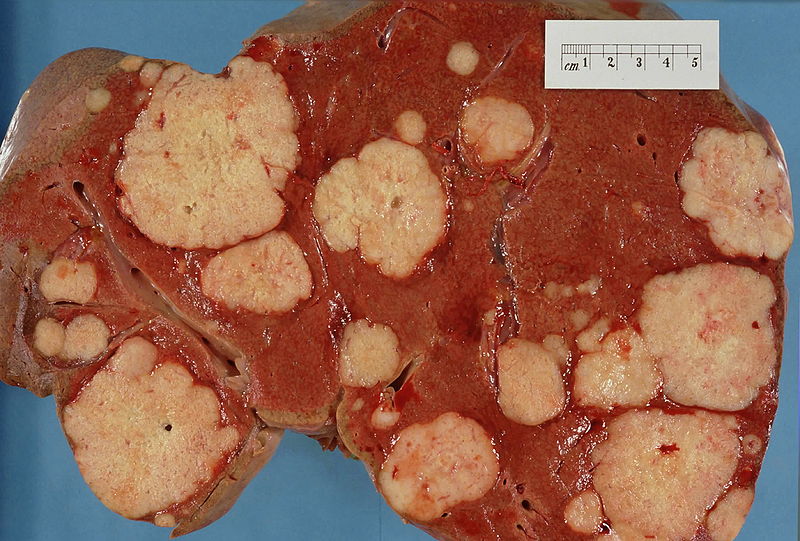 To explain why LOX is important, we need to go back a bit. Secondary tumours don't just spring up anywhere. In the same way that the ground needs to be right for a seed to grow, cancer cells need the right conditions. Back in 2005, scientists found that special cells move from the bone marrow into organs like the lungs, forming little bundles called pre-metastatic niches. And it's in these niches that spreading cancer cells grow.
To explain why LOX is important, we need to go back a bit. Secondary tumours don't just spring up anywhere. In the same way that the ground needs to be right for a seed to grow, cancer cells need the right conditions. Back in 2005, scientists found that special cells move from the bone marrow into organs like the lungs, forming little bundles called pre-metastatic niches. And it's in these niches that spreading cancer cells grow.
Now Janine Erler and her colleagues have found that a protein called LOX, or lysyl oxidase, plays an important role in forming these niches. LOX acts a bit like a craftsman, gluing together proteins that form the extracellular matrix - the jelly-like stuff that surrounds our cells. The researchers think that LOX glues together certain proteins, forming the right kind of environment to attract bone marrow cells, and therefore the right kind of environment for cancer cells to spread into.
Firstly, the team transplanted mice with normal breast cancer cells, or breast cancer cells that had been genetically manipulated so that they didn't contain any LOX. The scientists found that the mice carrying cancer cells without LOX had far fewer secondary tumours than those with the unchanged cancer cells. And the LOX-free cancer cells also failed to recruit bone marrow cells.
It seems LOX might also be important in human cancer cells. The scientists took 95 samples of secondary tumours taken from cancer patients, including people with breast, bowel, stomach and oesophageal cancers. And in more than half of the samples, there were high levels of LOX, and clusters of bone marrow cells.
So now that we know LOX is important for this process, scientists can start searching for drugs that might block its actions, which could potentially be used to treat cancer - or even stop it from spreading at all - in the future.

Strange forces on Martian rocks
The Spirit and Opportunity Mars rovers, which have recently celebrated their 5th anniversary on the red planet, seem to have discovered a strange force that is pushing rocks around the Martian surface.
 If you look at the photos of the Martian surface, it is strewn with small rocks ranging in size from pebbles to cobbles, but interestingly, none of them are touching. The rocks are all evenly spaced as if something was pushing them away from one another. The surface of Mars is very windy, but because the atmosphere is about a hundredth as dense as it is on Earth, the wind is nowhere near powerful enough to move this size of rock.
If you look at the photos of the Martian surface, it is strewn with small rocks ranging in size from pebbles to cobbles, but interestingly, none of them are touching. The rocks are all evenly spaced as if something was pushing them away from one another. The surface of Mars is very windy, but because the atmosphere is about a hundredth as dense as it is on Earth, the wind is nowhere near powerful enough to move this size of rock.
Jon D. Pelletier from the University of Arizona has worked out what is most likely causing this rock spacing, and it is an effect that will make sense to anyone who has every tried to dam a stream on a sandy beach.
If you put a rock in the stream, you may have noticed that the sand gets eroded away where the water is moving fastest - in front of and to the sides of the rock, where the water must accelerate to get around the blockage. If you leave the rock for long enough it will fall upstream into the hole that has been created.
Something similar appears to happen on Mars. If you have two rocks touching, the wind will be slowed between them but faster going around the opposite sides. This means that the wind will tend to move the sand they are sitting on from in front of the rocks, and deposit it between them. So like the stream eventually they will roll apart. This gives the appearance that the rocks repel one another and spread out, and no little green men are involved at all.

Stem cells for three blind mice
We're often talking on the Naked Scientists about research into stem cells, which could have the potential to treat many different ailments. This is because they can be persuaded to change into a wide range of cell types. Now researchers at the University of Washington in Seattle have used human embryonic stem cells to restore some sight, or at least light responses, to blind mice.
 The researchers were using mice that were lacking a gene called Crx, which means they are blind from birth as they don't properly develop photoreceptors, the cells that sense light. They grew human embryonic stem cells in the lab, and treated them with certain chemicals and growth factors that encourage the stem cells to change towards being retinal cells - cells found at the back of the eyeball.
The researchers were using mice that were lacking a gene called Crx, which means they are blind from birth as they don't properly develop photoreceptors, the cells that sense light. They grew human embryonic stem cells in the lab, and treated them with certain chemicals and growth factors that encourage the stem cells to change towards being retinal cells - cells found at the back of the eyeball.
Then the scientists injected these modified stem cells into the eyeballs of mice. They found that the cells settled into the back of the eye, forming organised layers. And when the cells were injected into the eyes of the Crx-deficient mice, they started to turn into photoreceptors. When the scientists tested the mice's responses to light, they found that these new photoreceptors had some response to light flashes, compared with eyes that hadn't been injected, which showed no response to light at all. And the eyes with the biggest areas of transplanted cells had the biggest responses.
The researchers also tested transplanting the modified stem cells into albino mice, whose photoreceptors are very sensitive to light and break down. The stem cells also integrated into the retinas of these mice, and were more resistant to breaking down than the cells that were already there.
This is exciting because it suggests that human embryonic cells could be a good replacement for damaged photoreceptors, and maybe in the future could be used to restore sight to people whose eyesight is damaged, or even to those who have been born blind.
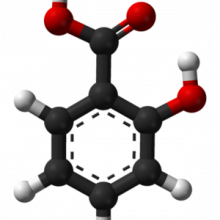
16:15 - Making your own Aspirin
Making your own Aspirin
Gwen Baxter, Dumfries and Galloway Royal Infirmary
Chris - Scientists in Scotland have discovered that humans and possibly many other animals make their own anti-inflammatory chemicals. The person who's made that discovery is Dr Gwen Baxter. She's from Dumfries and Galloway Royal Infirmary. She's here to tell us a little bit more about that. Hello Gwen, thank you for joining us. What are the Chemicals that you've discovered that humans make that are their own aspirin?
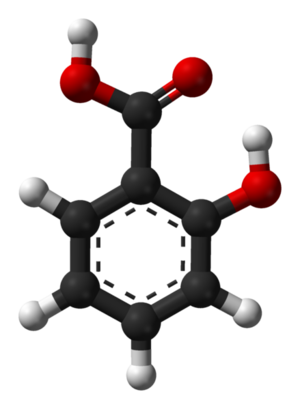 Gwen - It's linked to the finding that salicylic acid can be produced from benzoic acid which hasn't been reported in experiments before.
Gwen - It's linked to the finding that salicylic acid can be produced from benzoic acid which hasn't been reported in experiments before.
Chris - Tell us a little bit about salicylic acid. What is it?
Gwen - Salicylic acid's a very simple compound. It's been around for a long time. It's recorded as being used as a therapeutic agent from about 3000BC when it was used to relieve pain and as an anti-inflammatory agent, if you like and to help reduce temperatures in fevers.
Chris - If we have it in our body already, why do we need to take more of it?
Gwen - What we've discovered is that we seem to be able to produce it ourselves and that's a novel thing that we're reporting. Previously we had assumed it was something that people took in, in perhaps diet. Now we've found that it's produced in people.
Chris - What do you think it's actually doing in the people though?
Gwen - We're thinking it's a bit like considering your endorphins. I think people are familiar with that fact that they can be up-regulated. You can increase the amount circulating should you require to do so in times of stress. It's very close to thinking what happens to salicylic acid in plants. In plants it does act as a responder to stress such as attack by a pathogen. We're saying that humans are possibly in a position to do that same thing because we have shown that we can produce it.
Chris - You can make the same stuff from aspirin. In fact, when you put aspirin into the body it eventually turns into salicylic acid. Do you think that what you've discovered is basically the way in which aspirin or part of the way aspirin works is achieved?
Gwen - Well, I think that if we just go back a wee bit that salicylic acid was used for the things that aspirin is used for. The effect aspirin has on platelets and stops them sticking together which is a therapeutic use of aspirin that salicylic acid doesn't have in the same way although it does act as an anti-inflammatory. More recently it has become involved as the original agent itself, if you like.
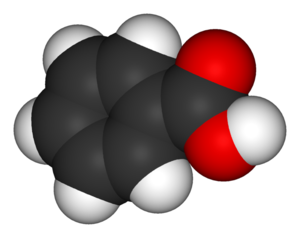 Chris - How do you get the salicylic acid made in the body and does everyone make it and do some people make it more than others?
Chris - How do you get the salicylic acid made in the body and does everyone make it and do some people make it more than others?
Gwen - That's another interesting thing. We've done lots of work over the years with people who would have salicylic acid in their body because they perhaps eat it so obviously vegetarians do have higher levels. No surprises there. We've also looked at people who have been fasting and they still maintain it so obviously it's not coming from diet which was the starting point of 'where is it coming from?' We're thinking that if we can find the store for it - it must be somewhere in the body or some precursor such as benzoic acid, which is a product of lots of other metabolic pathways that we have already recorded in our body - it can be used as a bio-regulator and help with some gene protection. As for, 'does everybody make it?' Well, we'll have to find that out. Certainly, in our work we've discovered that not everyone can metabolise the salicylic acid. Perhaps there is a relationship there to do with gene expression. I think the bottom line there is that it regulates biological systems and a lot of people are working on how small amounts of salicylic acid can modulate gene expression. It may be that if you're good at making it you're protected better than people who can't.










Comments
Add a comment